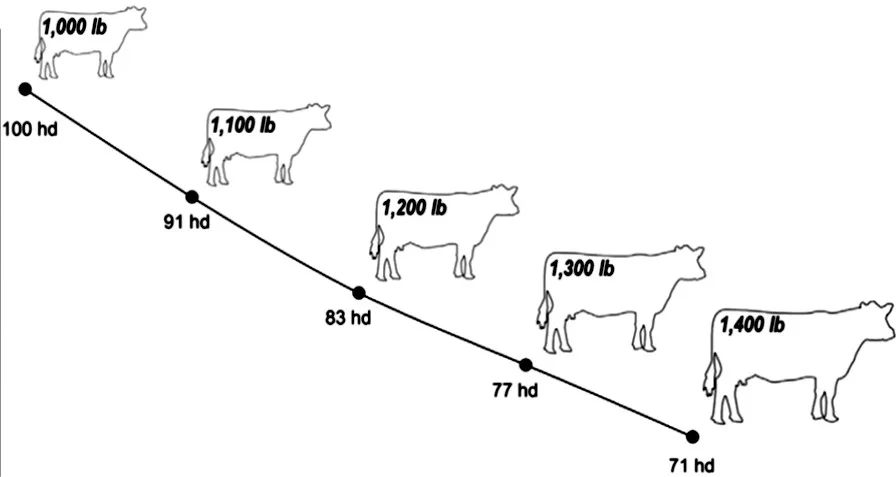With the coming of the New Year, it is traditional to look back at what happened, good or bad, in the world around us. For the cattle industry, one definite change I have seen in the last year is that “cow size” is mentioned more and more and finally given its full due – even in the freebie magazines! These are the same magazines devoted to following the path of the money laid down by the sellers of inputs who depend on pushing production as opposed to profit.
Going back to the early 1970s, everything we read, whether in magazines or university and government research papers, was all about increasing individual animal performance – with a special emphasis on weaning weights. This led to big cows, although it was not considered a detriment at the time. But now cow size is becoming a popular topic amongst producers and academics alike.
Why is this changing after over 40 years of big-cow dominance with very few speaking out about the illogic of big cows? One person, with the knowledge of what the producer on the land needed to be profitable, brought this into focus. Kit Pharo began his seedstock operation with a totally different approach than the norm. Instead of the industry’s standard of increasing performance no matter the cost, Kit knew it would take more than buying high-performance bulls for his customers to be profitable. This led to the PCC Philosophies that continue to be the guiding force in PCC’s seedstock operation.
One of Kit’s focal points was cow size. Bigger cows were not efficient and were reducing profit in several ways. Kit began a campaign for smaller cows that started with the publishing of the PCC Newsletter and speaking engagements around the country. As the years rolled by, with newsletters going to several thousand people and speaking engagements before thousands of producers and academics, cow size became something to not only talk about – but to seriously consider.

For nearly three decades… Kit was the only one speaking out and making waves about cow size. There were others with similar views, but they did not have the platform from which to sway large numbers of producers, which eventually encouraged (forced?) academics to take a real-world look at cow size and how it diminishes producer profits both directly and indirectly. This proves that one person with persistence can make a difference.